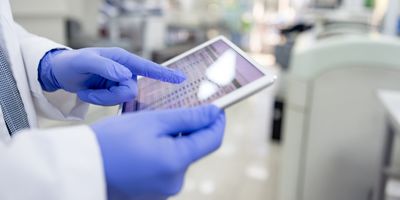Three Steps to Unify a Disconnected Biopharma Lab
Implementing an advanced LIMS can drive lab efficiency
Biopharmaceutical labs are working harder than ever across multiple tools and manual solutions. Although laboratory information management systems (LIMS) have advanced, the continuous addition of point solutions—a single standalone application that solves an isolated lab challenge—has created a fragmented, bolted-on technology landscape. This adds a burden to lab staff with many logins across different systems, which is a leading cause of frustration for end users.
Even with significant investments to maintain the lab, change control issues, system fragility, and an inability to keep up with requirements persist. So, what might the lab of the future look like? It could be unified, paperless, in the cloud, and finally, have a single login.
Identifying opportunities to drive biopharma lab efficiency
To plan your company's future state, start by rethinking what your lab can be to enable new and more connected ways of executing processes. Laying modern building blocks, like adopting an advanced LIMS or unified quality assurance (QA) and GxP training solutions, could be the first step toward achieving new levels of efficiency and quality.
Outdated paper-based and legacy approaches for managing lab operations pose significant data quality and scalability risks. The shortcomings translate into increased costs, maintenance burdens, frustrated lab operators, prolonged timelines, and disconnected processes. By understanding the limitations of existing approaches, lab leaders can identify new ways to drive efficiency supported by a modern LIMS.
A significant opportunity lies ahead for labs that bring together QA and quality control (QC) for a single source of real-time information and more streamlined workflows. For example, one source of data enables lab staff to log in once and easily access procedure documents that are critical to executing tests. With the right procedure, staff can ensure the test is executed correctly and record results and observations within the same system. The improvement in how labs operate can be a major step toward a digitally connected lab that shares information quickly and easily.
Defining what an advanced a LIMS can be
LIMS is a central hub for QC data collection, test execution, and data review that ensures compliance with regulatory requirements. While LIMS does support these critical processes, it can deliver more value.
The intricate nuances of the biopharmaceutical lifecycle, from clinical trials to commercialization, elevate QC data’s pivotal role in ensuring product quality and compliance. For companies evaluating a new LIMS to better manage QC, here are some key questions to consider:
- Is it a native cloud solution (an application built from the beginning on a scalable and dynamic cloud platform) that can keep up with the latest QC features and evolving business needs?
- Can it consolidate existing systems and unify processes?
- Does it offer open APIs for integrating with other applications?
- Can it help drive a quality culture across the organization?
- Will it deliver a better user experience?
- Would it enable a standard way to manage lab data and processes?
Scalability, compatibility with existing infrastructures, and alignment with long-term business objectives are all important considerations for a new LIMS system. Think about what operational improvements you might gain from LIMS that can streamline workflows, enhance data integrity, drive better lab productivity, and ensure compliance.
Advancing speed and accuracy with a cloud LIMS
Offering simpler user experiences, digital execution, and standardization of data and processes, cloud-native LIMS can pave the way for a new era of biopharma laboratory management. For example, electronic lab notebooks (ELNs) are an add-on tool for lab staff, offering digital alternatives to traditional paper-based documentation. However, these solutions have a high cost of ownership due to the amount of time and people with expertise managing ELNs required to keep them in sync with evolving governing procedures.
Cloud LIMS can incorporate the digital capabilities of the ELN without any additional costs or the need for a third-party application. This simplifies the lab infrastructure and ensures continuous value realization by reducing technical debt.
While no one LIMS may encompass every requirement, a provider focused on continuous improvement can help ensure that the technology will keep up with the needs of the industry. Here are the key LIMS capabilities to look for:
- End-to-end QC batch disposition workflows
- Stability study management from design to execution
- Sample tracking and management from collection to storage to testing
- Digital method execution, including compliant instrument usage
- Comprehensive LIMS master data change management
Civica Rx, a nonprofit generic drug manufacturer founded to reduce and prevent drug shortages and price spikes in the United States, embraced cloud-based LIMS to improve its QC operations. Chief manufacturing and supply chain officer Jay Benson says, "We guarantee generic drug volumes for our partner hospitals and health systems, so having a cloud LIMS solution is a top priority to simplify our internal manufacturing and testing while driving right first time, lead time adherence, and visibility across the value chain."
Moving toward the future biopharma lab
A lab team that can work as one with a single cloud-native LIMS can see real-time data as it flows across various stages of laboratory operations, from sample collection to analysis and reporting. With a more connected way of working, companies can drive a culture of quality excellence and promote a right first time (RFT) approach to minimize errors and maximize outcomes.
With a more holistic approach, lab staff can access the data and documents needed to make more informed decisions, optimize resources, and increase the effectiveness of the QC lab. This will be an essential step forward in making the future, more connected lab a reality.

